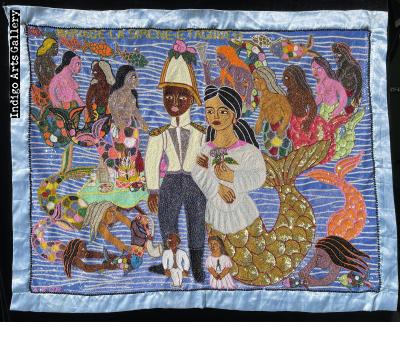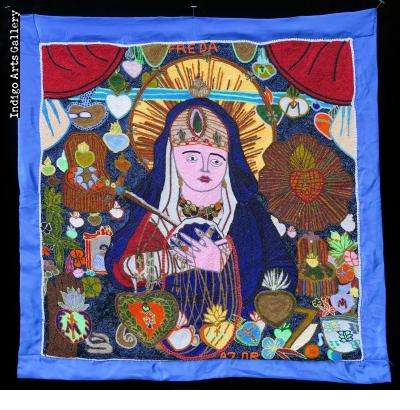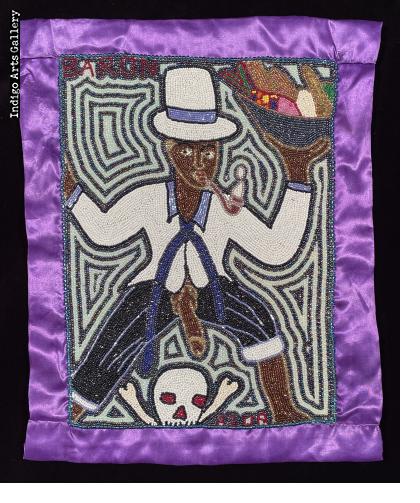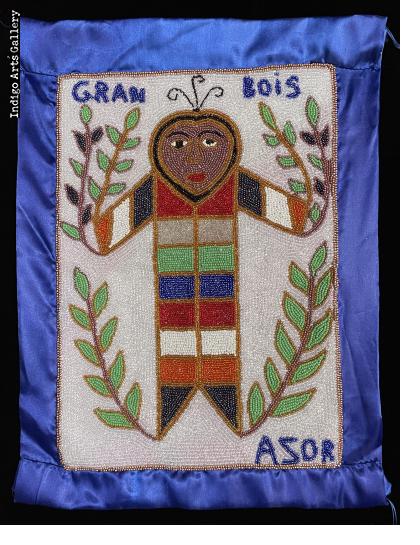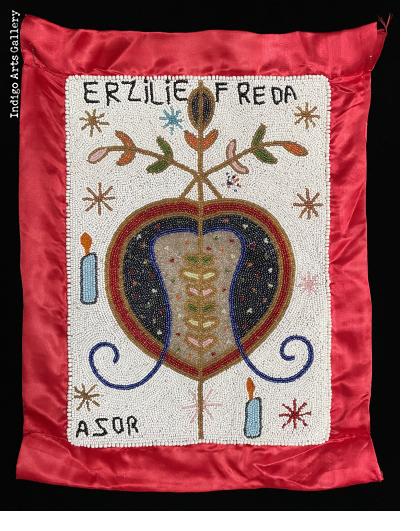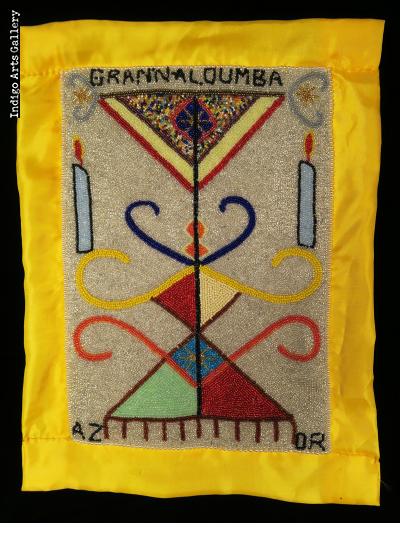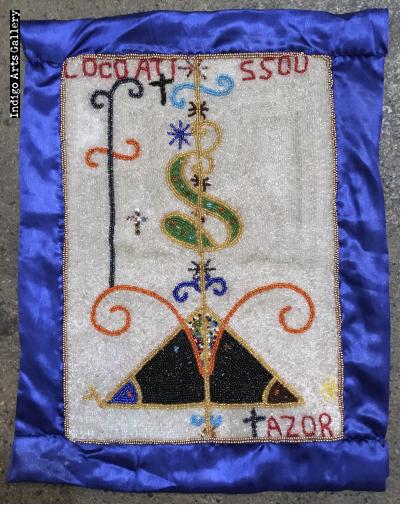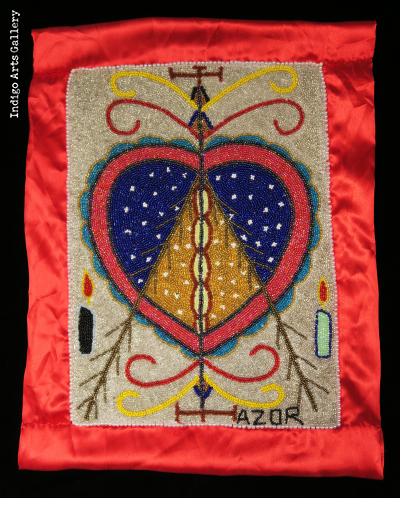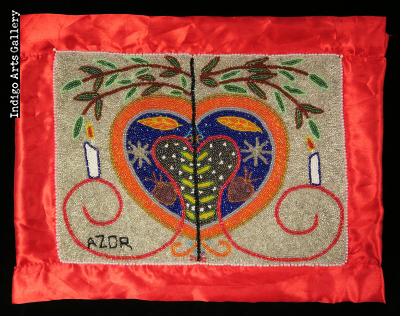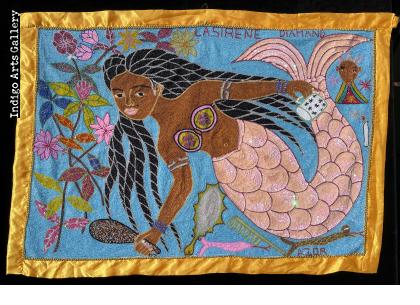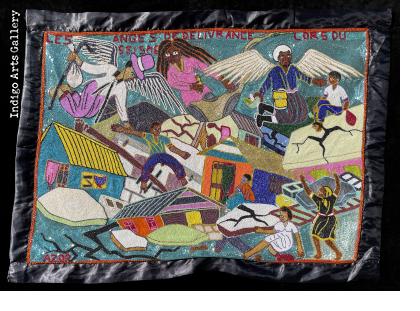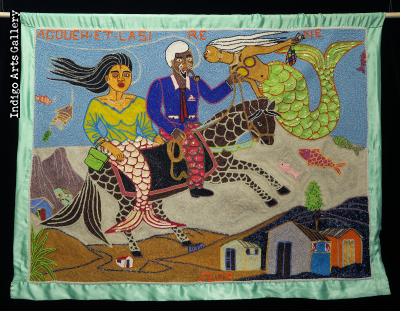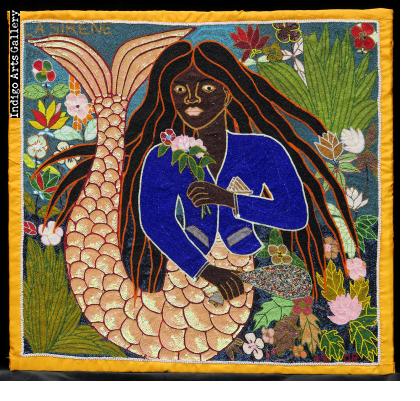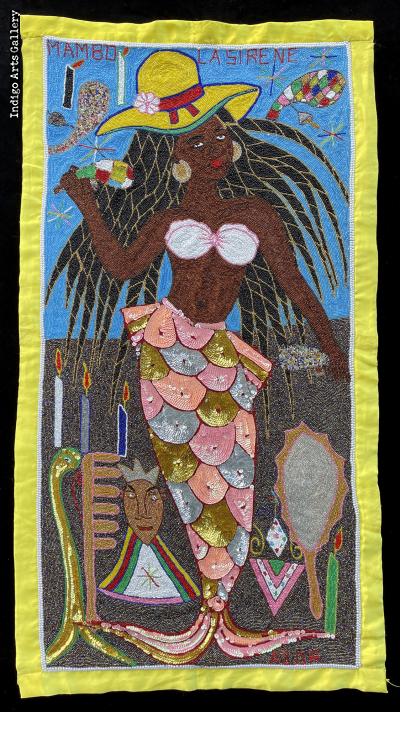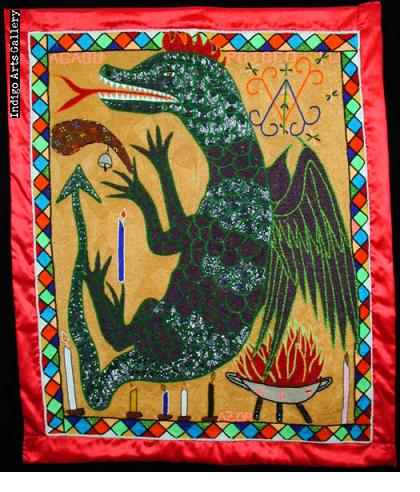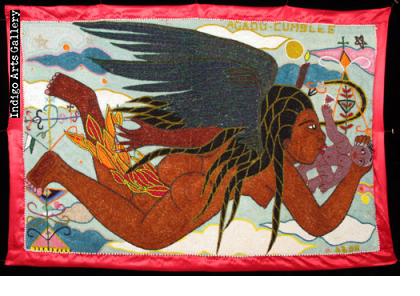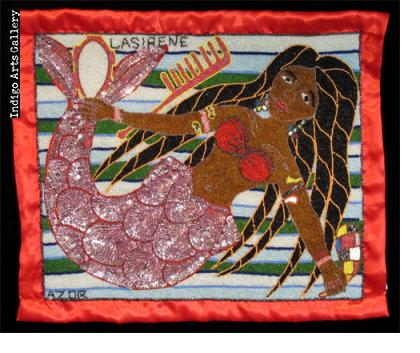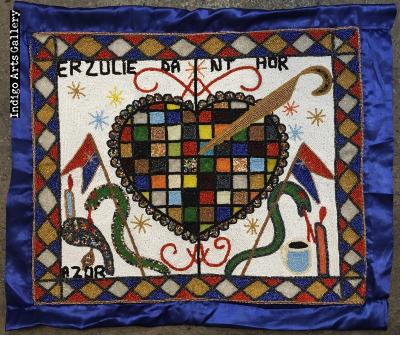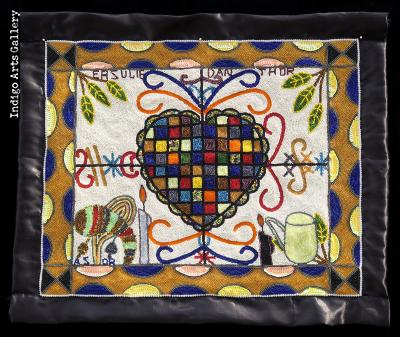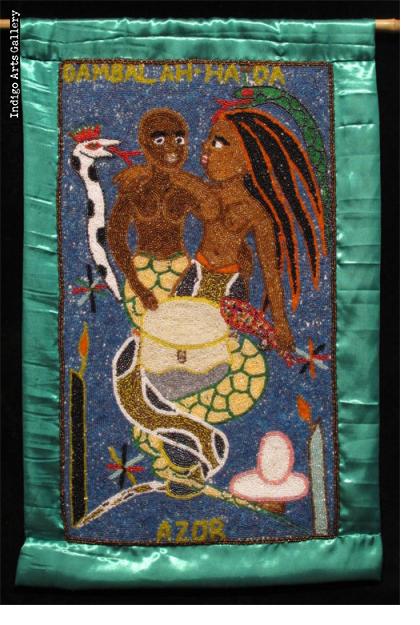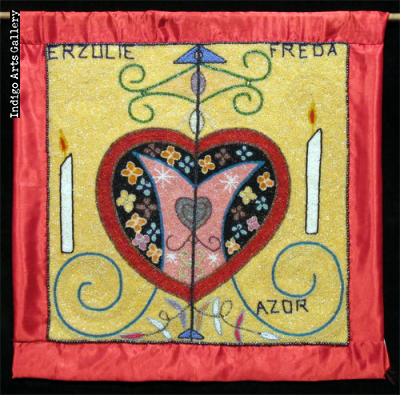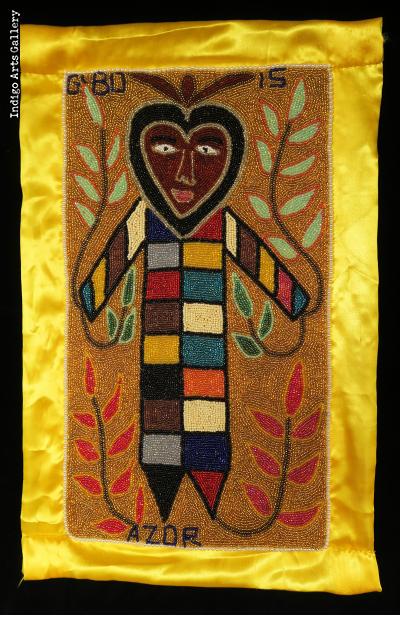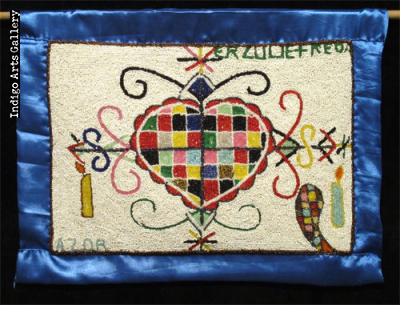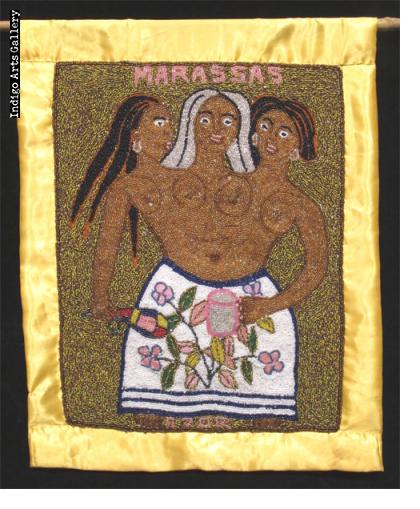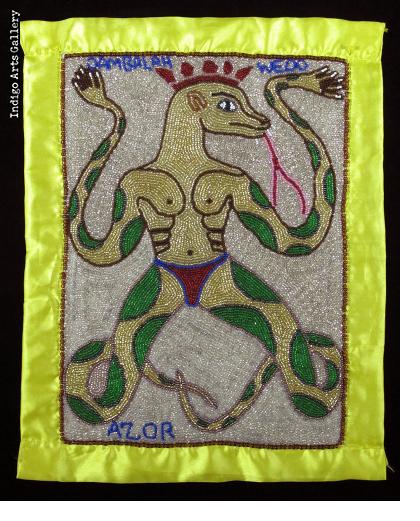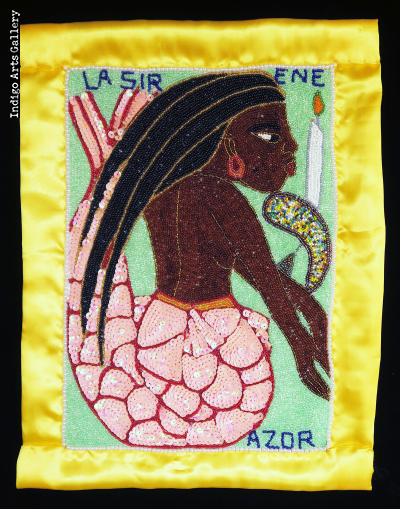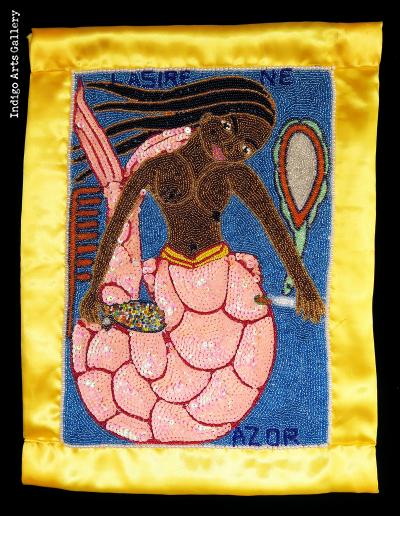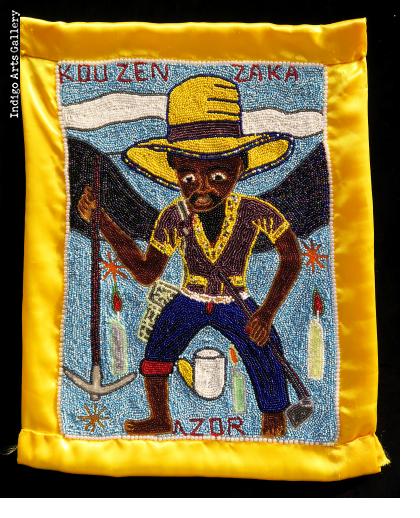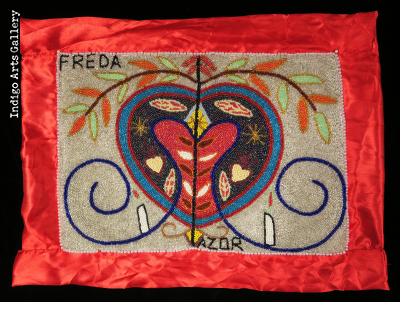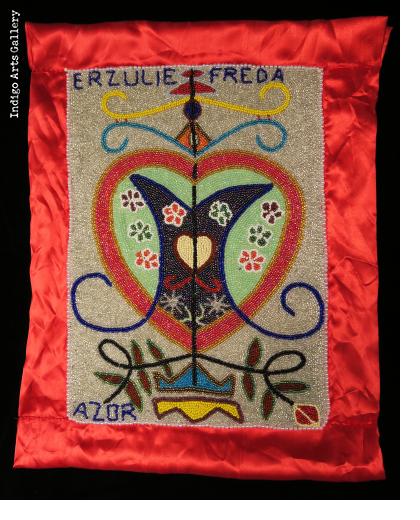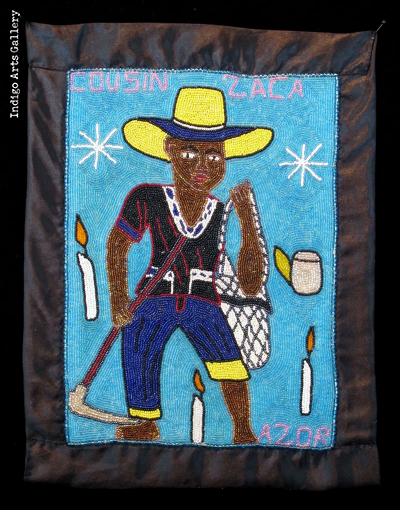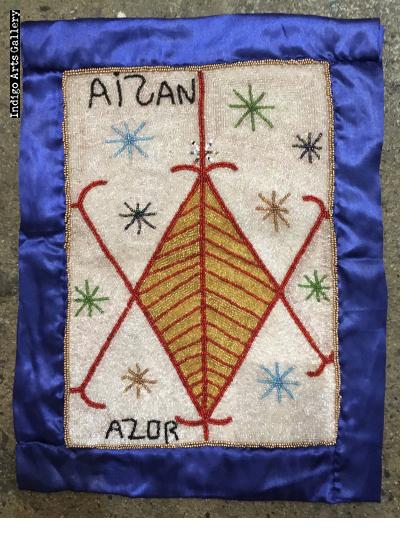About the Artist
Roudy Azor was born on October 15, 1980, in Port-au-Prince, Haiti.
Roudy is a master of the densely beaded style of drapo Vodou, or Vodou flag, pioneered by Myrlande Constant (b. 1968). Constant had worked at a factory in Port-au-Prince which employed the fine skills (and low wages) of Haitian workers to make ornate beaded wedding dresses for the French market. They used an ornate French beading technique known as tambour to create dazzling surfaces of beads and sequins. Myrlande was fired from the factory in about 1990, not long before the plants themselves closed due to the harsh economic and political conditions of embargo-era Haiti. But Constant soon realized that she could put the skills she had learned to good work in the creation of a new kind of drapo Vodou or Vodou flag. She began to produce ornate, densely beaded and sequined flags for the Vodou temples and predominately for the growing market for flags as artworks. She transformed not only the technique but the form of the drapo, with asymmetrical compositions, multiple characters, and complex narratives. What had traditionally been sacred vévé diagrams and symmetrical religious icons on fabric become, in her hands, paintings rendered in beads and sequins. Several other artists, primarily women who had worked at one of the wedding dress factories, joined her at her studio or formed their own studios.
One of the first men to work in this technique was a young Roudy Azor. Roudy worked in Myrlande’s studio for a time before forming his own studio at the age of eighteen, in 1998. Like Myrlande, Roudy works primarily with the symbolism and pantheon of Vodou. But Roudy has shown a talent for taking the Vodou canon in new directions, with a vivid imagination and a free interpretation of relatively obscure Vodou lwas or deities.

